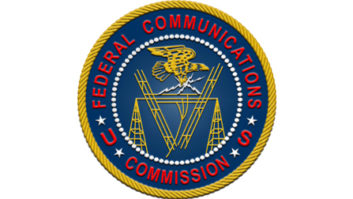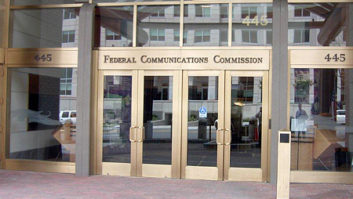
Ubiquiti’s AirView software enables RF energy visualization in the 2.4 GHz unlicensed Wi-Fi band.
Much of the equipment in today’s transmitter sites has an Ethernet jack on the back. An Internet connection is very nice to have — or in the case of “anywhere-anytime” access to remote control, it’s downright necessary.
The traditional means of connecting to the transmitter site has been leased telephone lines or some form of STL microwave connection. More recently, Wi-Fi links in the unlicensed Industrial, Scientific and Medical bands have been used by some pioneering stations.
This was the topic of an engineering session at this year’s NAB Show titled “Broadcast Applications in the Unlicensed Wi-Fi Bands — It’s Not as Bad as You May Think!” Despite the somewhat foreboding title, presenters Steve Johnston, director of engineering and operations at Wisconsin Public Radio, and Kevin Trueblood, WPR broadcast engineer, find many good reasons for utilizing these unlicensed channels.
ISM ADVANTAGES
In the past, operations in the ISM bands have been cost-prohibitive, slow and tedious. But recent advances in the technology have made them much more affordable, spacious and robust.
There are also several advantages. By extending the station’s LAN to the transmitter site, you can take advantage of the virtual schematic function included with most remote control gear. This allows you to see status indications and control functions throughout the plant.
Another benefit of extending the station LAN to the transmitter is that, with the newest generation of audio codecs and a Wi-Fi link, you can create a new STL for a fraction of the cost of a traditional licensed STL system. An IP-based phone extension can also be installed at the transmitter, saving the cost of a traditional phone line, with the proviso that it is properly set up for 911 calls.
There’s good news and bad news with operations in the unlicensed bands.
The cost of equipment is significantly less than what you’d spend on licensed equipment. There is no need for frequency coordination, nor any need to relicense if you move facilities. Depending on the band used, there may be some advantages in terms of susceptibility to rain and snow fade.
The bad news, of course, is that your frequency is not protected. You are on your own to resolve any interference problems that may arise after your system becomes operational.
Johnston and Trueblood note that the four most widely used unlicensed bands are 902–928 MHz, 2.40–2.48 GHz, 5.1 –5.825 MHz and 24.0–24.25 GHz. There are advantages and disadvantages to operating in each of these bands, and these are summarized in the table above.
THE RULES
While these bands are unlicensed, there are some ground rules that need to be followed. The maximum allowed transmitter power in all bands is 1 watt. The maximum effective isotropic radiated power is 4 watts in the 900 MHz and 2.4 GHz bands. The maximum EIRP in the 5.8 GHz band is 12 watts. There are exceptions. Power is limited to 160 mW from 5.15–5.25 GHz and and 800 mW from 5.25–5.35 GHz.
Broadcasters have some advantages over other tenants of the ISM bands. Access to “vertical real estate” in the form of tall towers and rooftop sites allows them to literally rise above much of the interference and noise. Many of the newer receivers are software-based, and have built-in spectrum analyzers, which enable you to find the quietest channel.
Unlicensed Wi-Fi gear is no different than anything else you put on a tower. Precautions need to be taken for lightning and surge protection. That means using outdoor-rated, shielded Cat-6 Ethernet cable, grounding it and using ferrite chokes. Surge protection on power-over-Ethernet connections is also a good idea.
If the link is to be used for audio or video links with a large data stream, take the necessary steps to keep latency low and consistent. This means selecting a channel with the lowest interference and using transceivers from the same manufacturer on each end. While there is usually compatibility among various manufacturers’ equipment, experience has shown that mixing them up can sometimes add latency.
Many Wi-Fi devices can act like a home wireless router, with the ability to accommodate many host connections. The problem is, this adds latency. If you’re using just two devices, be sure to select point-to-point mode.
Lastly, be sure to turn off all firewalls, DHCP and routing within the access point. Keeping devices in a simple bridge mode enables them to simply transmit packets without further processing.
For backup, users may want to deploy Wi-Fi links in different bands. For example, if you have a 5.8 GHz link and a licensed 950 MHz link, you can add a 902 MHz link, and set it up for automatic failover to the 5.8 GHz link. This is an especially attractive option due to the low cost of equipment.
A high data throughput is ideal, but it can come at the cost of large bandwidth. This may result in interference or difficulty in establishing a solid link. The solution may be to reduce bandwidth from the default 20 MHz to 3 or 5 MHz.
Johnston and Trueblood reminded attendees of the old maxim: Never assume. With unlicensed Wi-Fi, don’t assume that because you are in an urban area there will be interference. Also, just because you’re in a rural area, don’t assume there are no other users. Wireless Internet Service Providers are often power users of these bands, and there can be a great deal of congestion.
Finally, some consideration needs to be given to security. Anyone who can hack into your Wi-Fi link is on the station’s LAN. Using WAP2-AES encryption should be standard. Also, be sure to hide your SSID or Wi-Fi name so it is not obvious who you are. A name such as “WXXX transmitter” may attract extra attention from hackers.
EARLY ADOPTER
Wisconsin Public Radio was an early adopter of this wireless Wi-Fi technology at their WHA Madison flagship station. The combination of difficulties with maintenance of an aging equalized phone loop to the transmitter and low cost of 5.8 GHz equipment pushed the purchase decision.
A topographic survey revealed there was a clear line-of-sight path for the two miles between studio and transmitter. A Ubiquiti AirGrid 5.8 GHz link with 27 dBi of gain was installed. The total cost for the radio gear and 1,000 feet of shielded Cat-5e cable was around $350.
Despite the low cost, the new system exceeded Johnston and Trueblood’s expectations. With 40 MHz of bandwidth, they were getting 100 MB of throughput. After some tweaking, which involved taking the link out of Auto mode, a latency of 2–3 milliseconds was achieved. Next, they installed two Barix audio codecs running in linear PCM WAV mode for the STL. With bandwidth left over, two more Barix codecs were installed for backhaul audio from a satellite downlink at the transmitter.
The installation was completed more than 14 months ago. So far, the system has been trouble free.
Tom Vernon is a longtime contributor to Radio World. Find more of his articles by searching keyword “Vernon” on radioworld.com.











